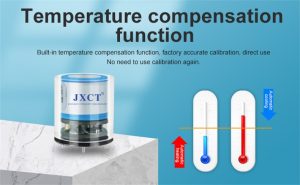Air pollution is a global environmental challenge that affects the health and well-being of millions of people. It is essential to monitor air quality to understand the extent of pollution and take necessary measures to protect public health. Traditional methods of air quality monitoring have limitations in terms of cost, accuracy, and efficiency. However, with advancements in technology, gas sensors have emerged as powerful tools in advancing air quality monitoring. This article explores the potential of gas sensors in revolutionizing air quality monitoring and improving public health outcomes.
The Need for Advanced Air Quality Monitoring:![]() Air pollution has detrimental effects on human health, causing respiratory diseases, cardiovascular problems, and even premature death. It is crucial to monitor air quality accurately to identify pollution sources, assess the effectiveness of control measures, and develop targeted strategies for improvement. Traditional monitoring methods, such as manual sampling and laboratory analysis, are time-consuming, expensive, and limited in scope. Gas sensors offer a more efficient and cost-effective solution for real-time air quality monitoring.
Air pollution has detrimental effects on human health, causing respiratory diseases, cardiovascular problems, and even premature death. It is crucial to monitor air quality accurately to identify pollution sources, assess the effectiveness of control measures, and develop targeted strategies for improvement. Traditional monitoring methods, such as manual sampling and laboratory analysis, are time-consuming, expensive, and limited in scope. Gas sensors offer a more efficient and cost-effective solution for real-time air quality monitoring.
How Gas Sensors Work:
Gas sensors are electronic devices that detect and measure the concentration of various gases present in the atmosphere. They operate based on different principles, including electrochemical, metal oxide semiconductor, and optical sensing. Gas sensors can detect a wide range of pollutants, including carbon monoxide (CO), nitrogen dioxide (NO2), ozone (O3), sulfur dioxide (SO2), and volatile organic compounds (VOCs). These sensors provide accurate, real-time measurements, enabling immediate action to be taken to mitigate pollution and improve air quality.
Applications of Gas Sensors in Air Quality Monitoring:
Monitoring:
Gas sensors have diverse applications in air quality monitoring, ranging from personal devices to large-scale monitoring networks. Some key applications include:
a. Industrial Emissions Monitoring: Gas sensors play a crucial role in monitoring emissions from industrial facilities, enabling compliance with regulations and the identification of pollution hotspots. Continuous monitoring with gas sensors allows for timely intervention, reducing the environmental impact of industrial activities.
b. Indoor Air Quality Monitoring: Gas sensors can be used to monitor indoor air quality in homes, offices, schools, and other indoor environments. This helps identify pollutants such as CO, CO2, and VOCs that can have adverse effects on occupants' health. Prompt detection and mitigation of indoor air pollutants contribute to a healthier indoor environment.
c. Urban Air Quality Monitoring: Gas sensors deployed in urban areas provide real-time data on pollutant levels, helping cities assess air quality, plan mitigation strategies, and communicate health risks to the public. These sensors can be integrated into smart city frameworks, enabling data-driven decision-making for urban air quality management.
Advantages of Gas Sensors in Air Quality Monitoring:
Gas sensors offer several advantages over traditional monitoring methods:
a. Real-time Monitoring: Gas sensors provide continuous, real-time measurements, offering up-to-date information on air quality. This allows for immediate action to be taken in response to pollution incidents or changing conditions.
b. Cost-effectiveness: Gas sensors are often more cost-effective than traditional methods, as they eliminate the need for manual sample collection, transport, and laboratory analysis. They also require less maintenance, making them a practical solution for long-term monitoring.
c. Portability and Accessibility: Gas sensors come in various sizes and forms, ranging from handheld devices to stationary monitors. This portability allows for easy deployment in different settings, including remote locations and areas with limited infrastructure.
d. Integration with IoT and Data Analytics: Gas sensors can be integrated into Internet of Things (IoT) networks, enabling seamless data collection, analysis, and visualization. Advanced data analytics techniques can be applied to these sensor data, facilitating trend analysis, pollution source identification, and predictive modeling.
Challenges and Future Perspectives:
While gas sensors offer significant advancements in air quality monitoring, challenges remain. Calibration, sensor drift, and cross-sensitivity to different gases are ongoing concerns that need to be addressed to ensure accurate and reliable measurements. Data management, integration, and standardization across sensor networks also require attention to facilitate effective analysis and interpretation of air quality data.
Looking ahead, the future of air quality monitoring lies in the integration of gas sensors with other technologies such as big data analytics, machine learning, and artificial intelligence. This integration can enable the development of advanced
 : +86 155 8830 2704
: +86 155 8830 2704 : jxdziot@gmail.com
: jxdziot@gmail.com
